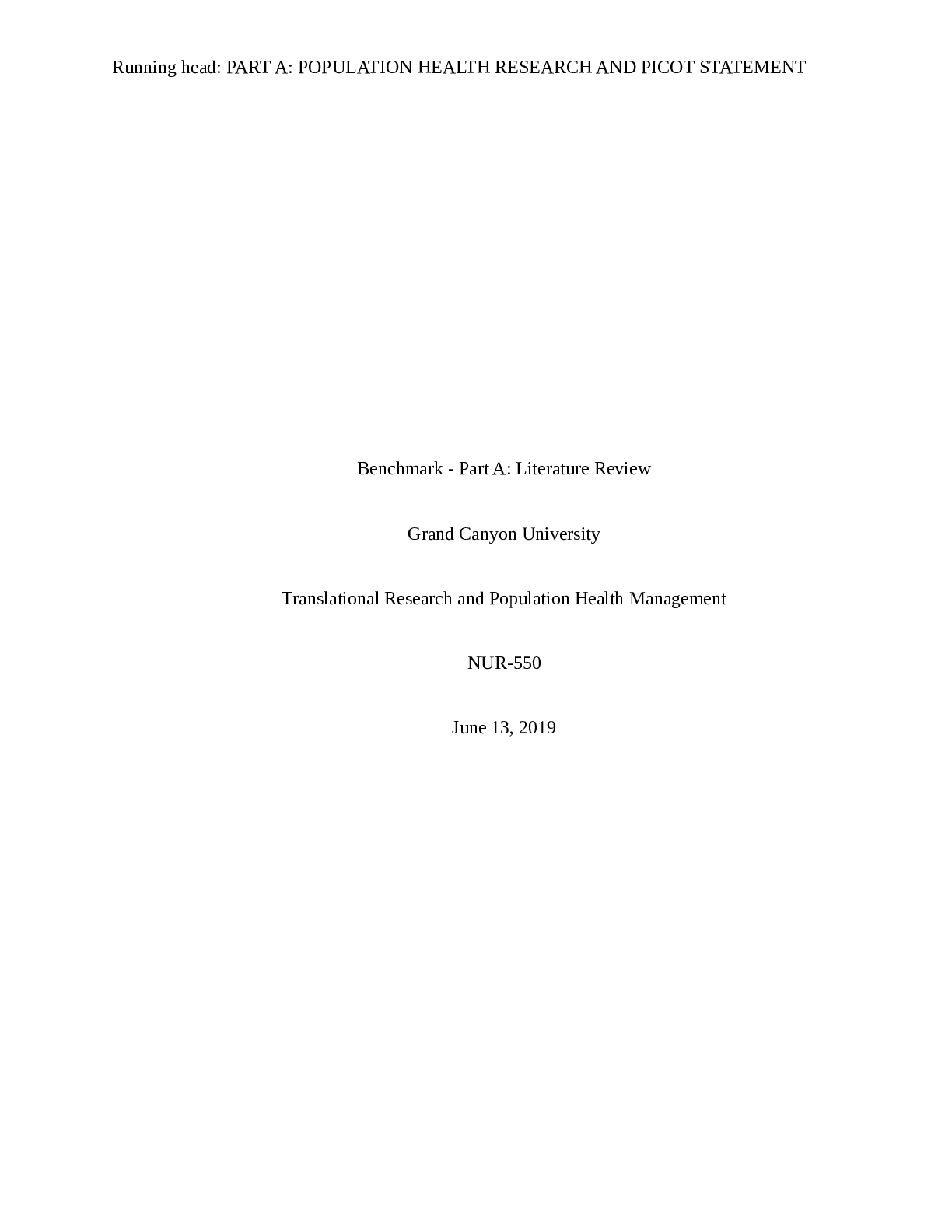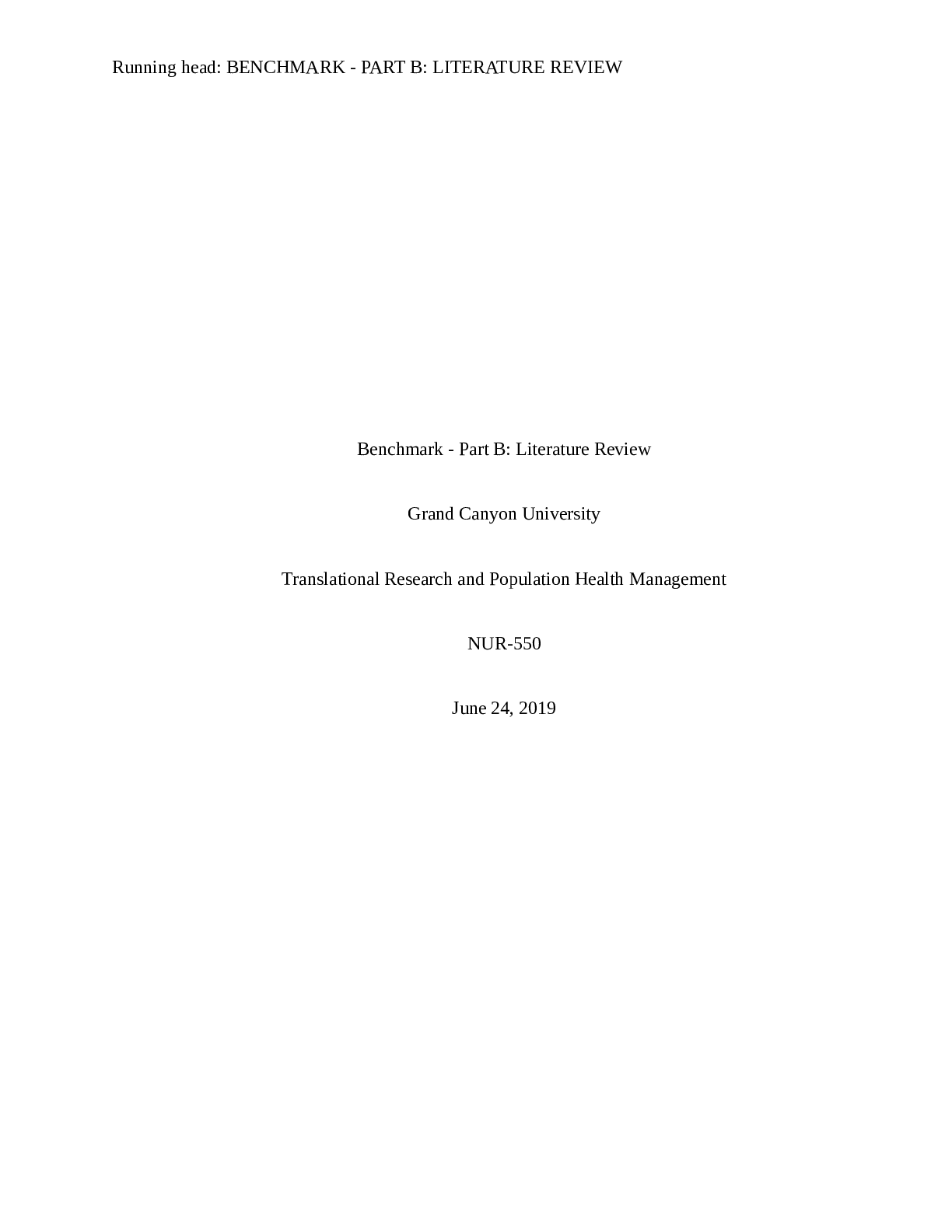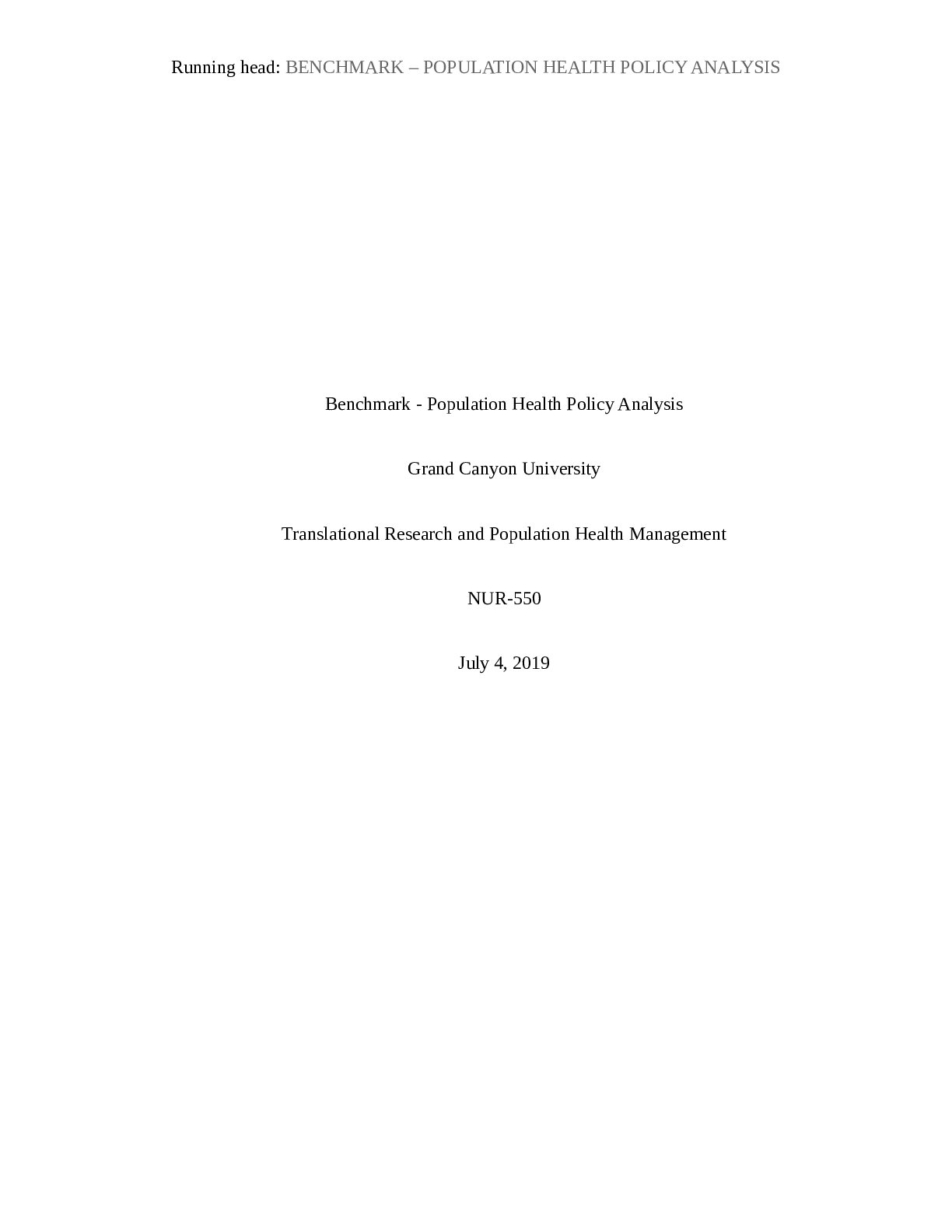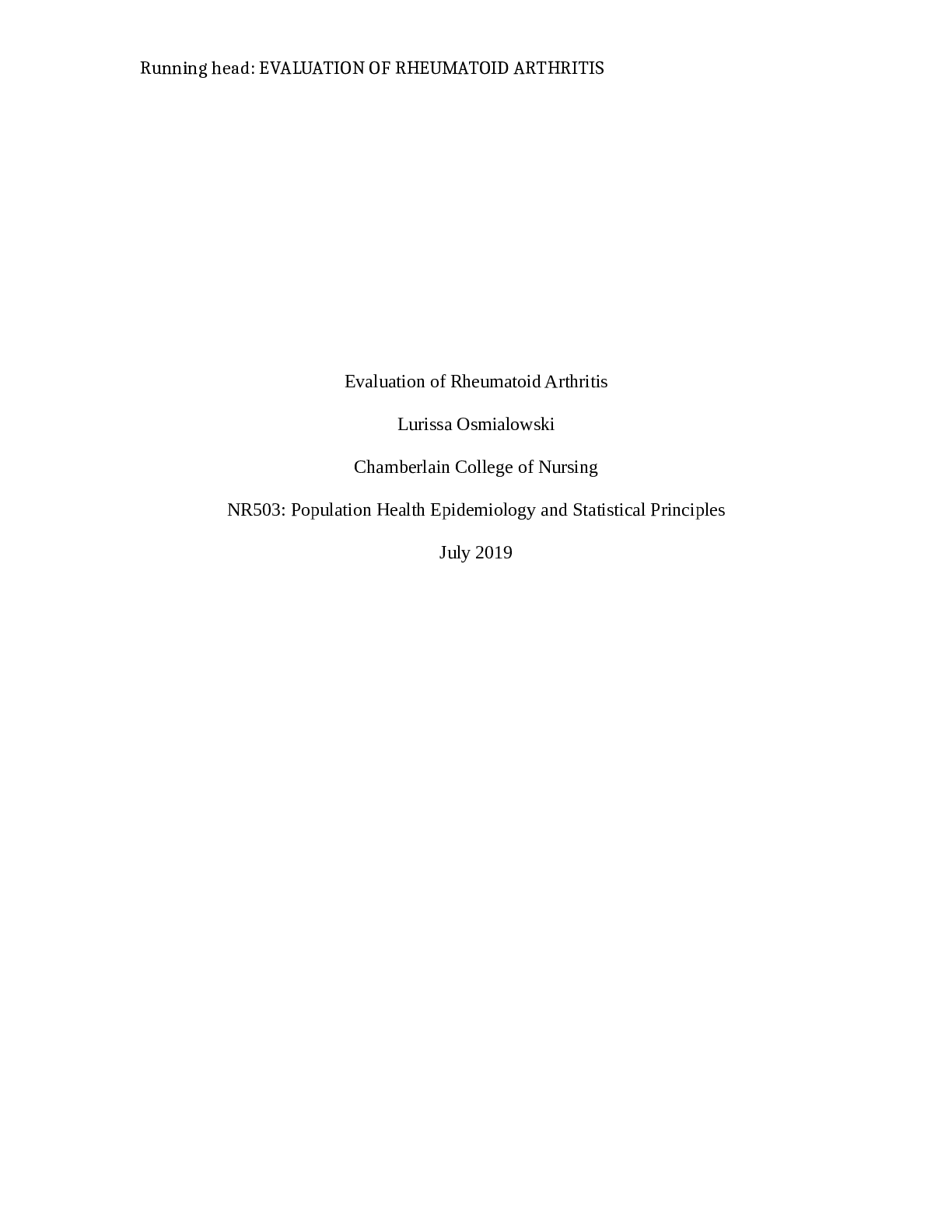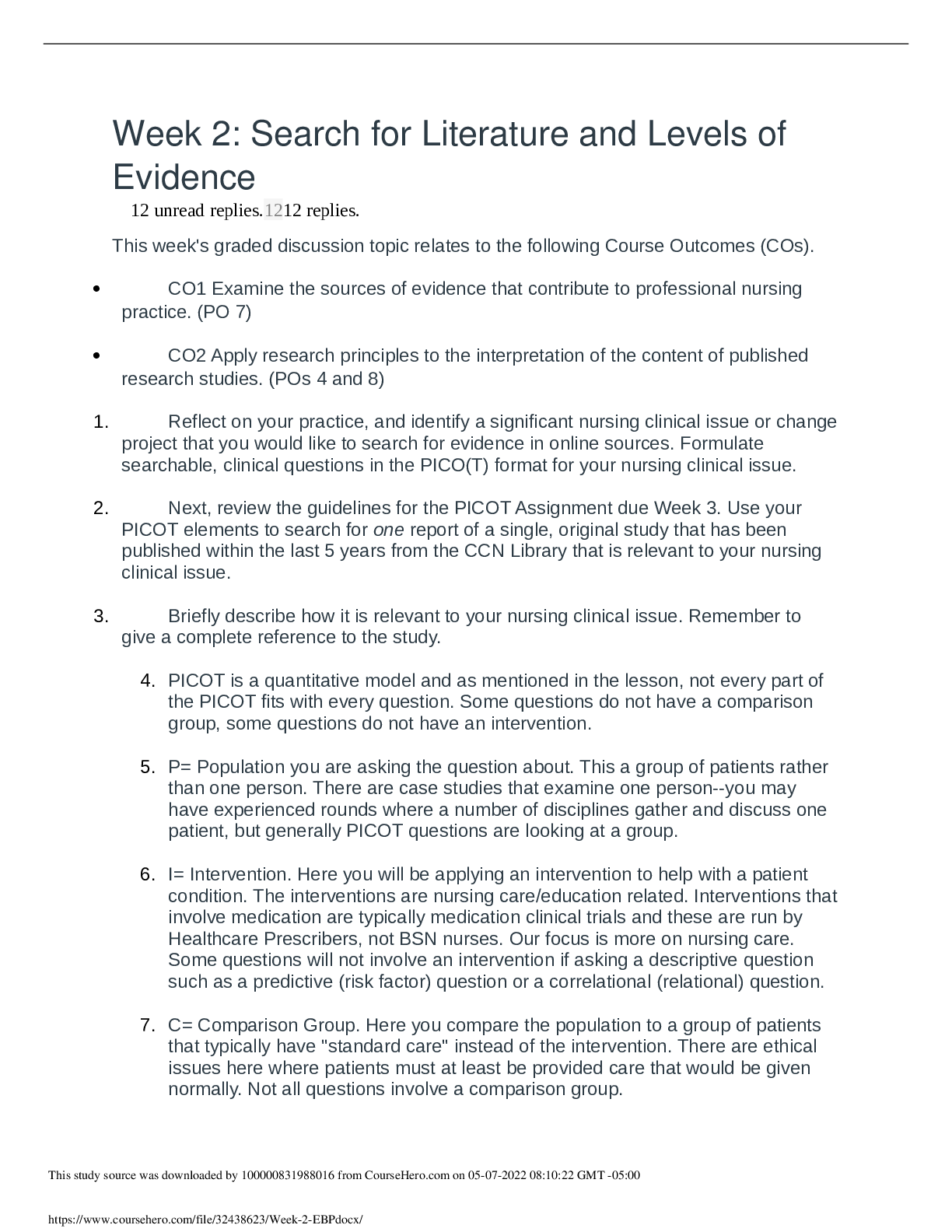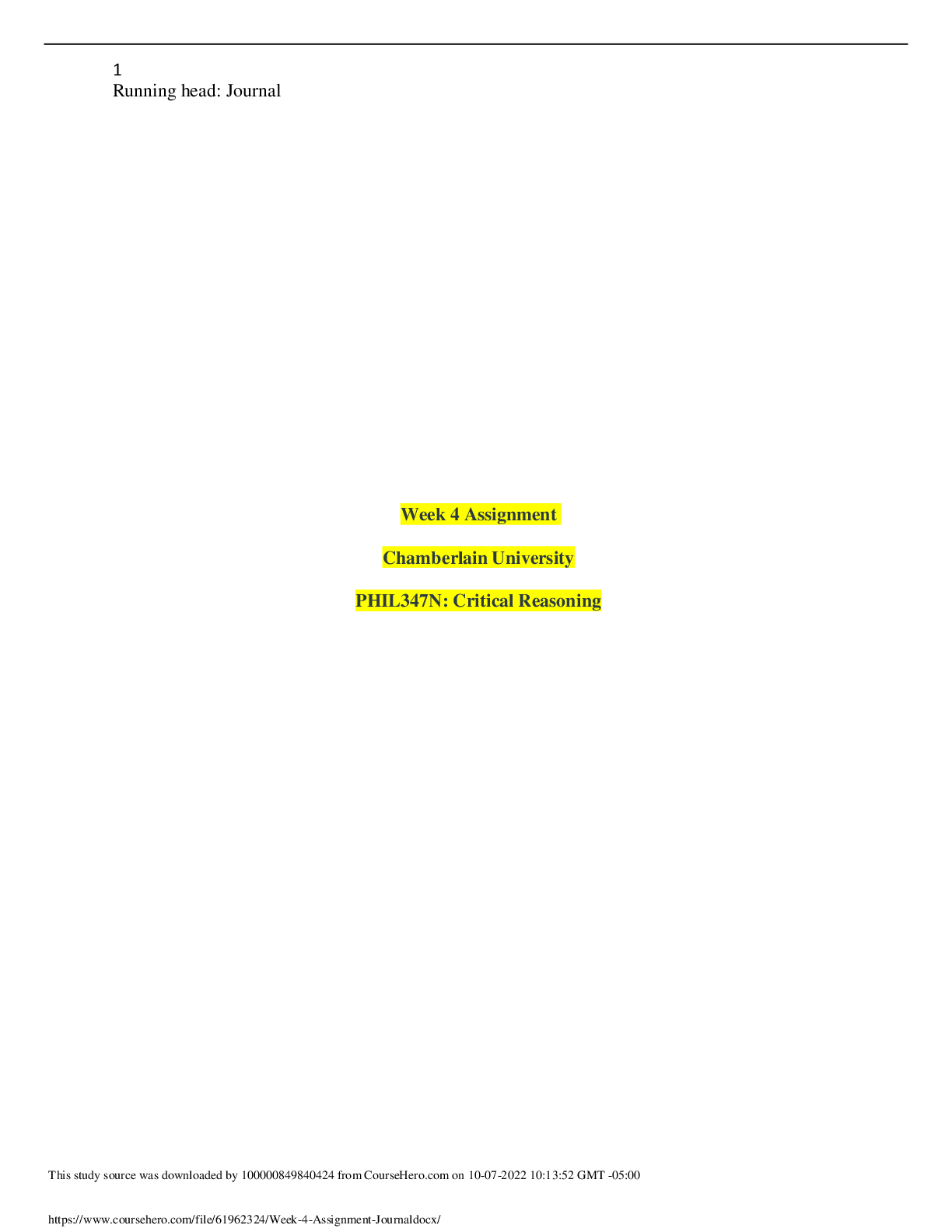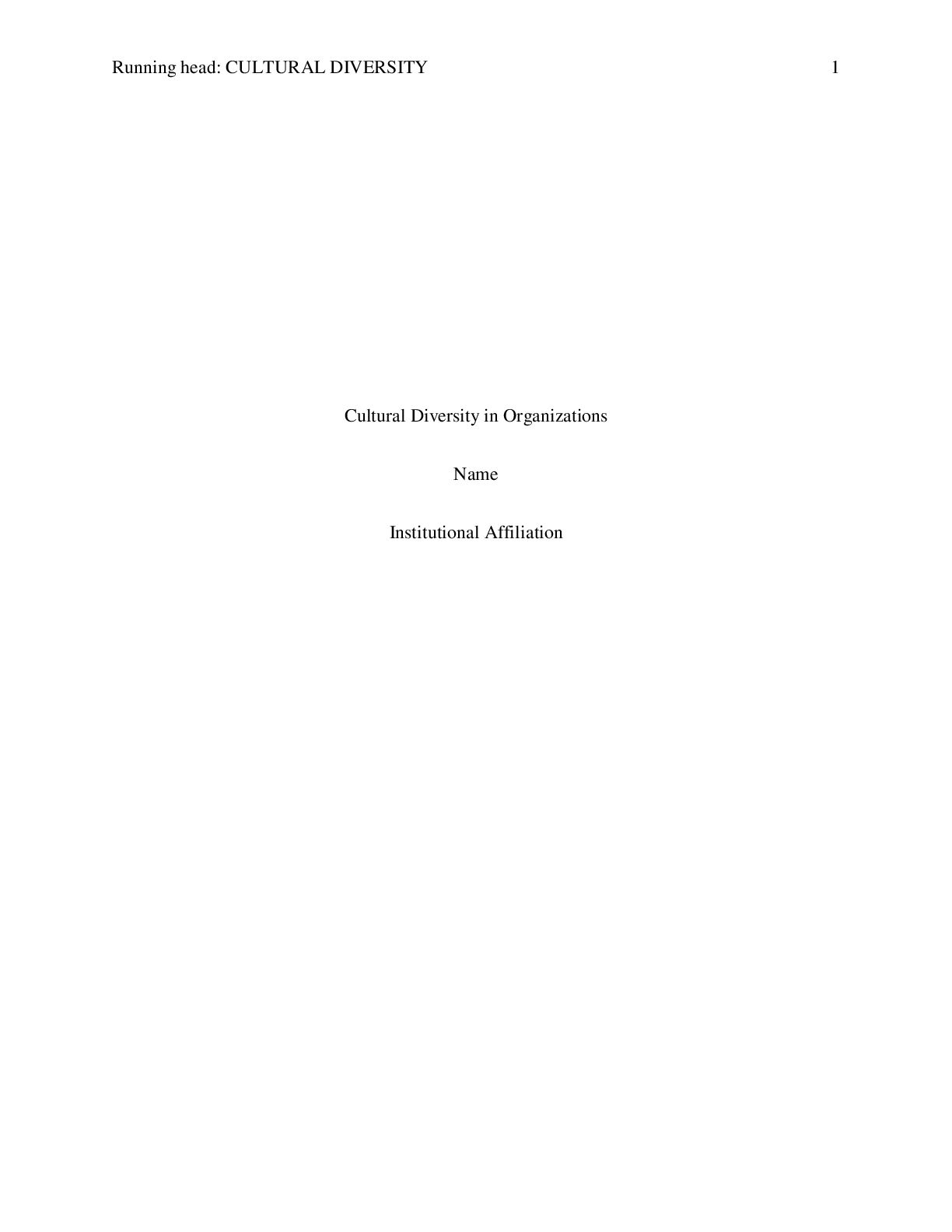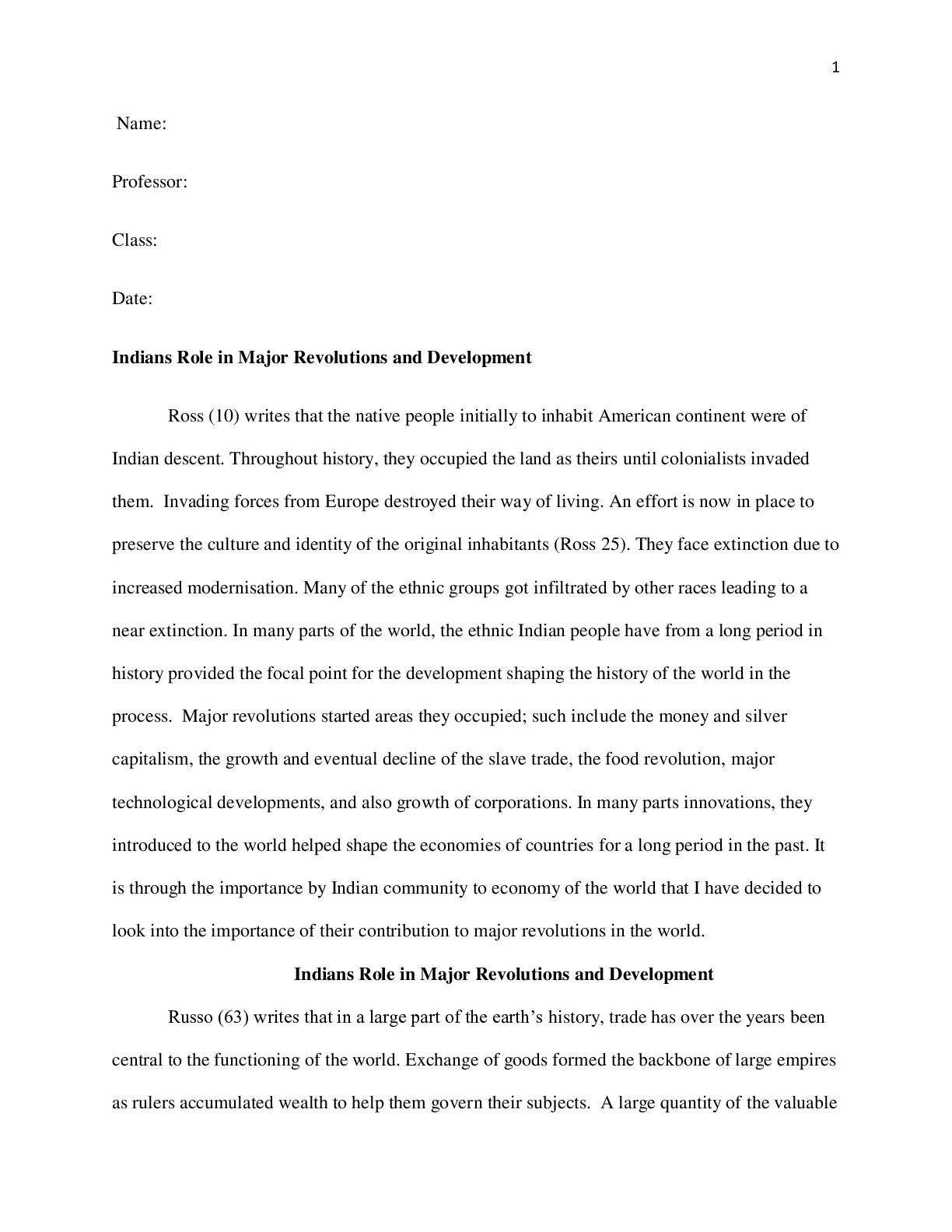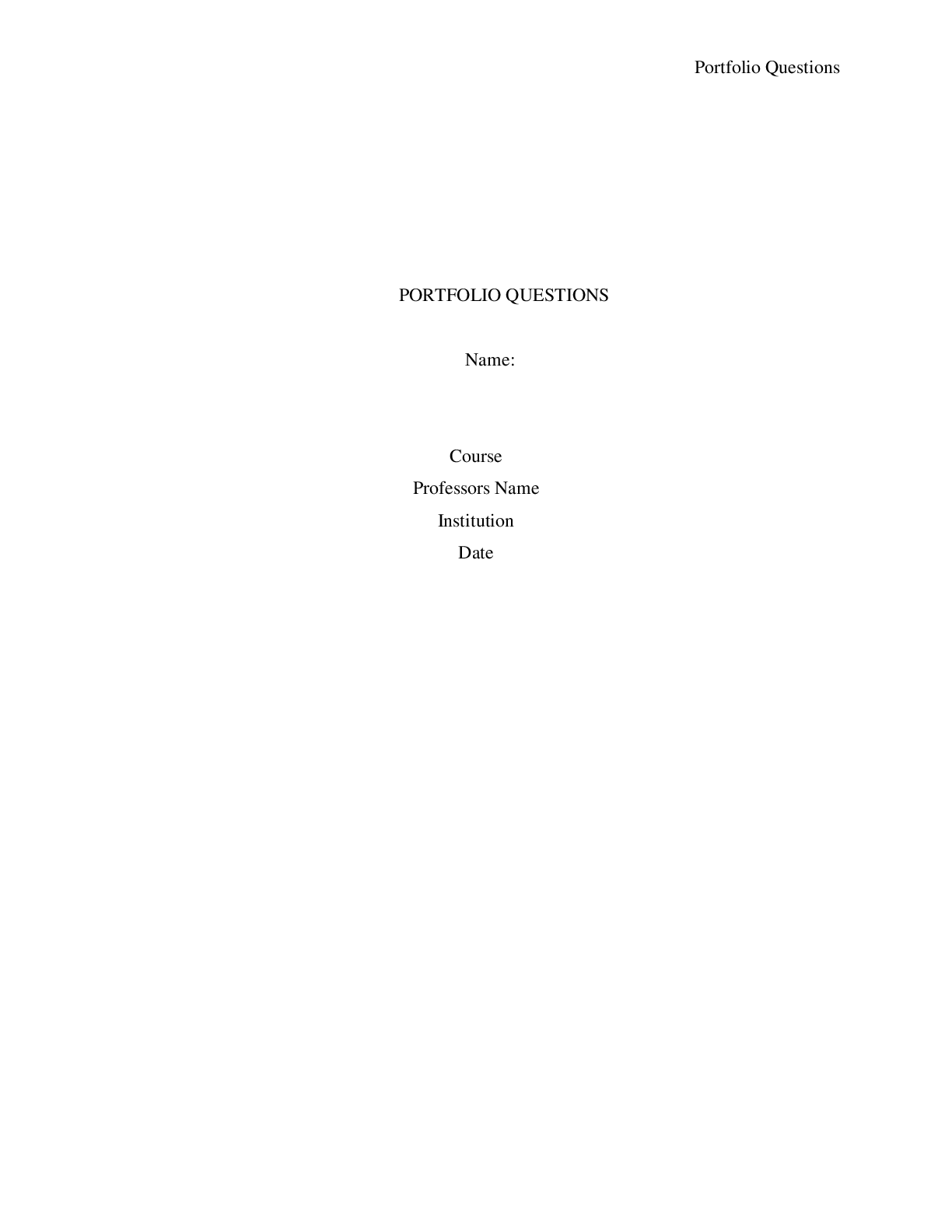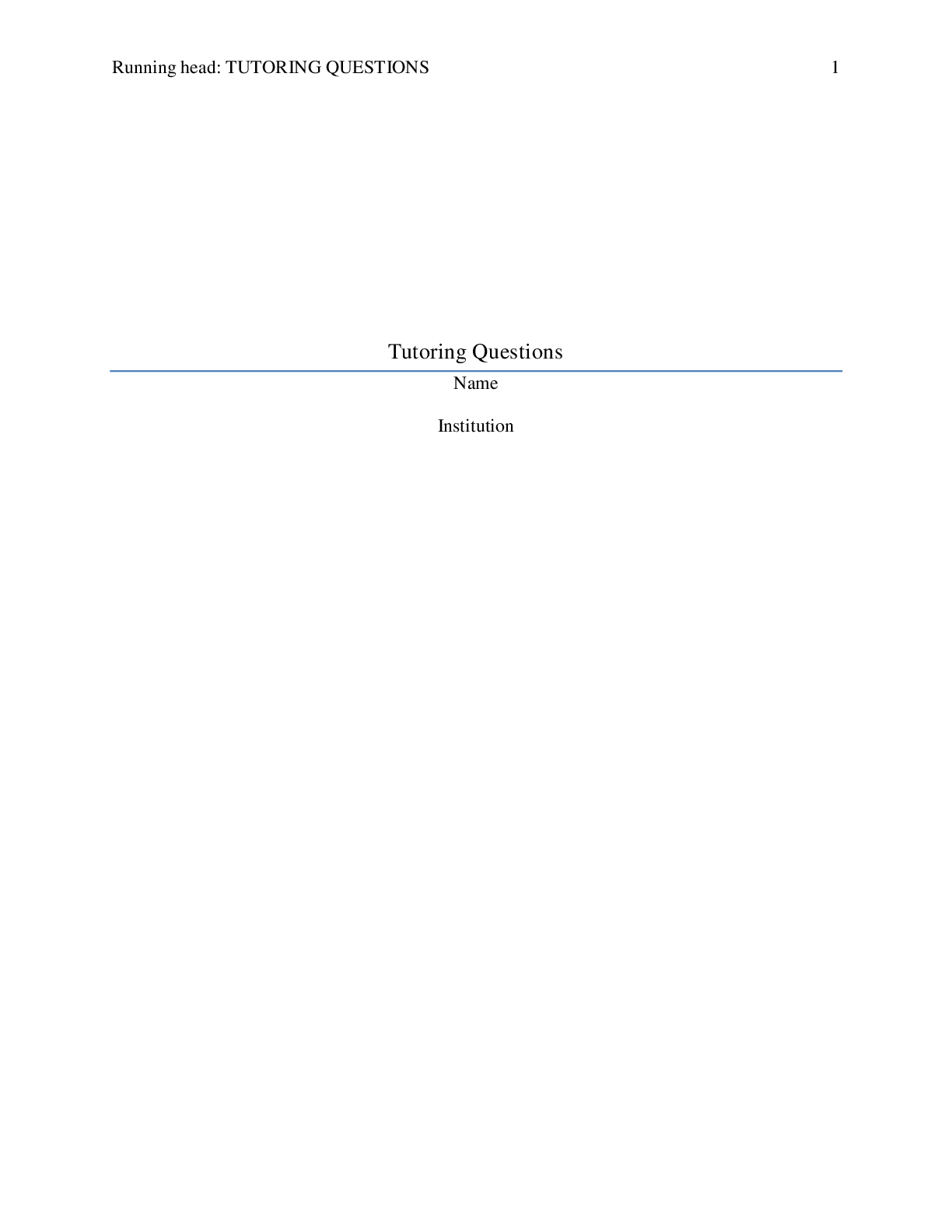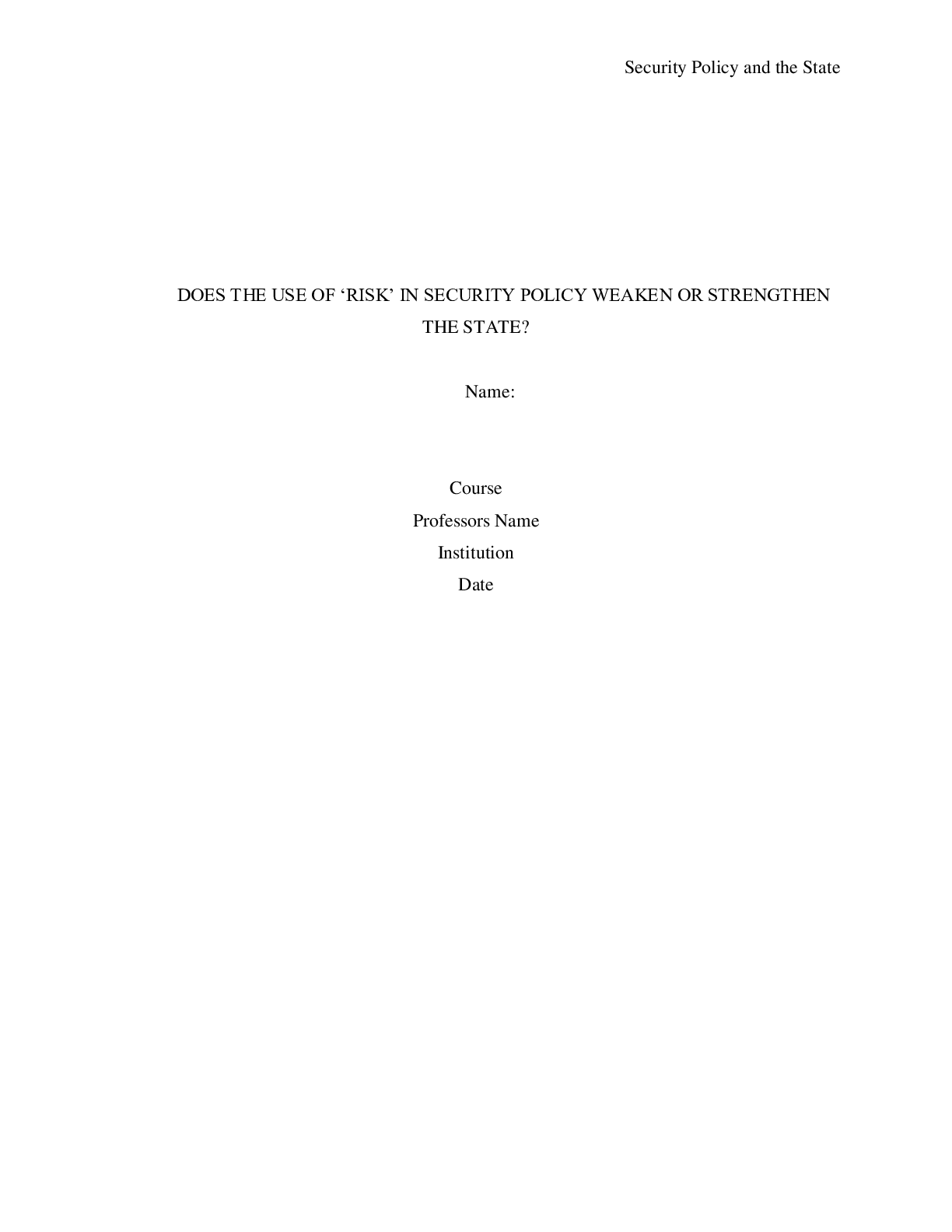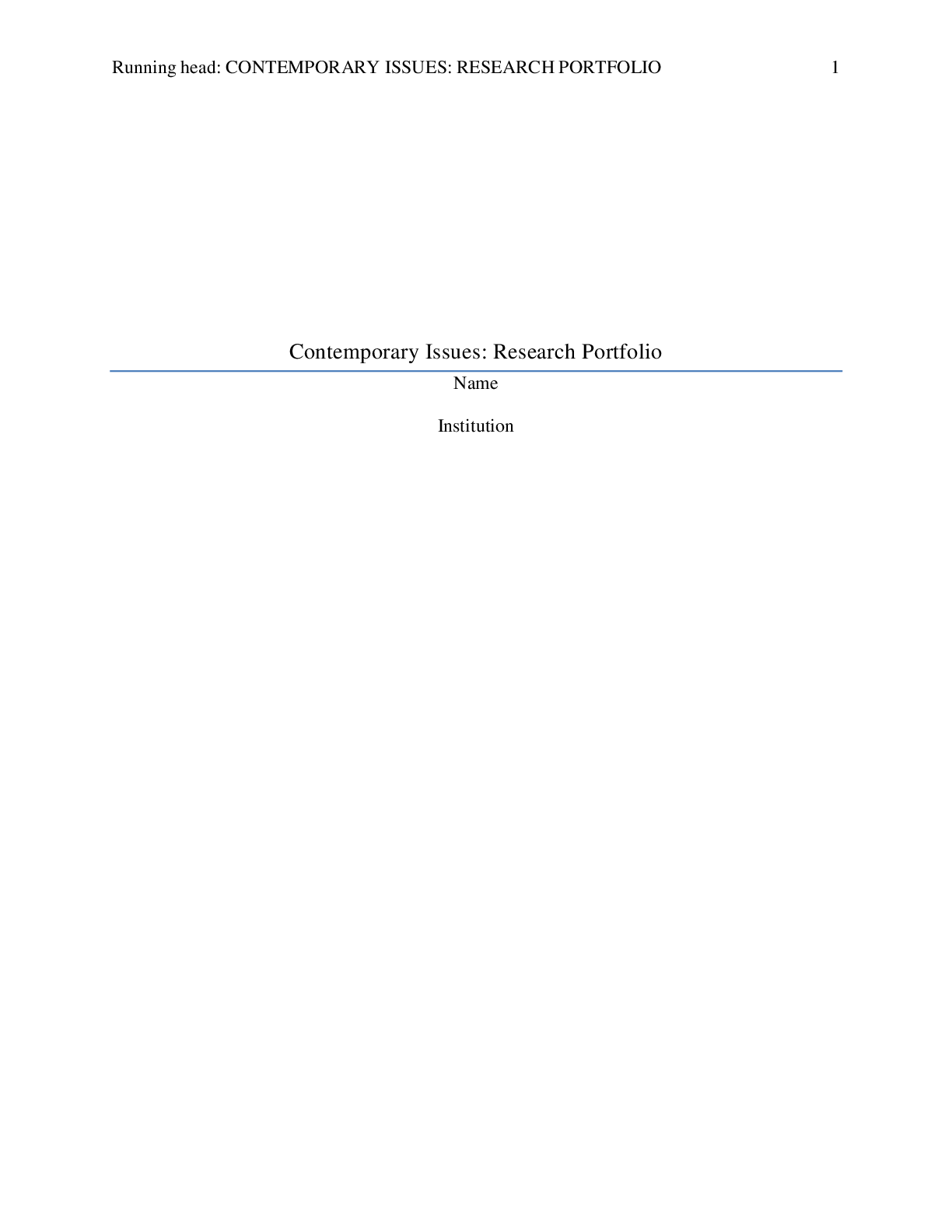NR 503 Week_6_Epidemiological_Analysis_Chronic_Health_Problem
Document Content and Description Below
Epidemiological Analysis: Chronic Health Problem Chamberlain College of Nursing NR503: Population Health Epidemiology and Statistical Principles December 2019 Epidemiological Analysis: Chronic Hea... lth Problem At least eight percent of the global population is impacted by Chronic Kidney Disease (CKD), and it is one of the leading causes of life lost worldwide (Chen, Knicely & Grams, 2019). Patients and health care providers usually underestimate the CKD risk factors despite CKD are commonly attributed to serious health conditions such as diabetes and hypertension (Chen, Knicely & Grams, 2019). This paper includes the following sections: introduction, background, and significance of the health problem, current surveillance and reporting methods, descriptive epidemiological analysis of the health problem, screening, diagnosis and guidelines, plan of action, and conclusion. Background and Significance of the Health Problem Chronic Kidney Disease (CKD) is when kidney functions are being gradually damaged and not able to clean the blood as well as a healthy kidney does. When the glomerular filtration rate (GFR) of less than 60 ml/min per 1.73 m2 is detected, or indication of kidney damage is shown, or when both conditions are observed, for at least 90 days without the regard of any underlying cause, the patient is considered to have CKD (Webster, Nagler, Morton, & Masson, 2017). The International Society of Nephrology reported that CKD is a significant cause of the dramatic increase in mortality rate. The number of fatalities attributed to CKD is up 82.3% in the last two decades. Chronic Kidney Disease has become a public health crisis and is putting tremendous pressure on healthcare resources (Xie et al., 2016). The Centers for Disease Control and Prevention (CDC) estimates that about 15% of US adults, 37 million in total, have CKD (CDC, 2019). One of the most troubling facts is that most people who have CKD do not know they have it, and half of the people with limited kidney functions, who are not being treated by dialysis, do not know they have CKD (CDC, 2019). Statistics from CDC show that CKD is commonly a condition in seniors 65 years or older, 38% versus 13% from the 45–64 age group, and 7% at the 18–44 age group. Chronic Kidney Disease happens more often to women than to men and is more commonly associated with blacks than with whites or Asians. Overall, it is estimated that 14% of Hispanics have CKD (CDC, 2019). The CKD prevalence refers to th [Show More]
Last updated: 1 year ago
Preview 1 out of 13 pages
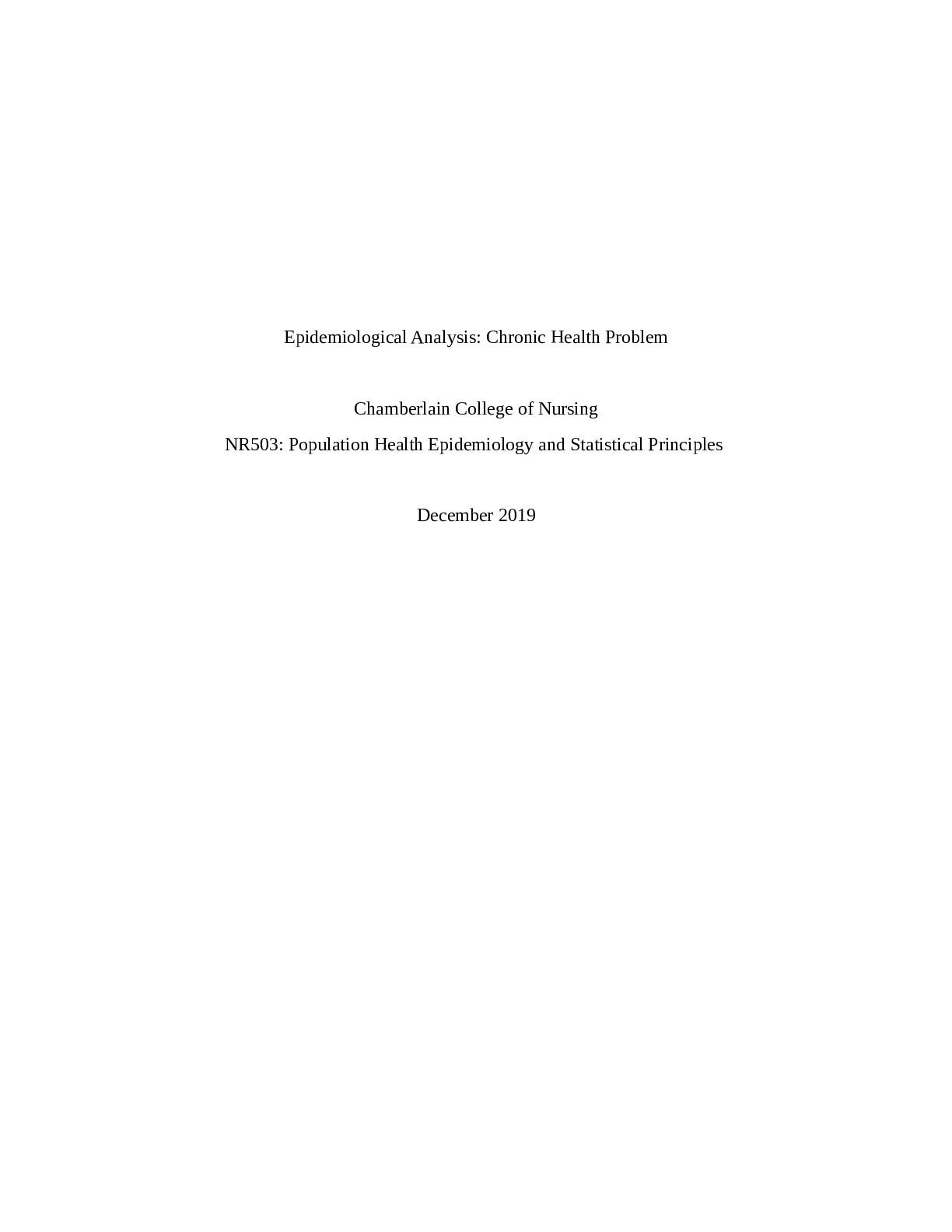
Reviews( 0 )
Document information
Connected school, study & course
About the document
Uploaded On
May 09, 2022
Number of pages
13
Written in
Additional information
This document has been written for:
Uploaded
May 09, 2022
Downloads
0
Views
63

